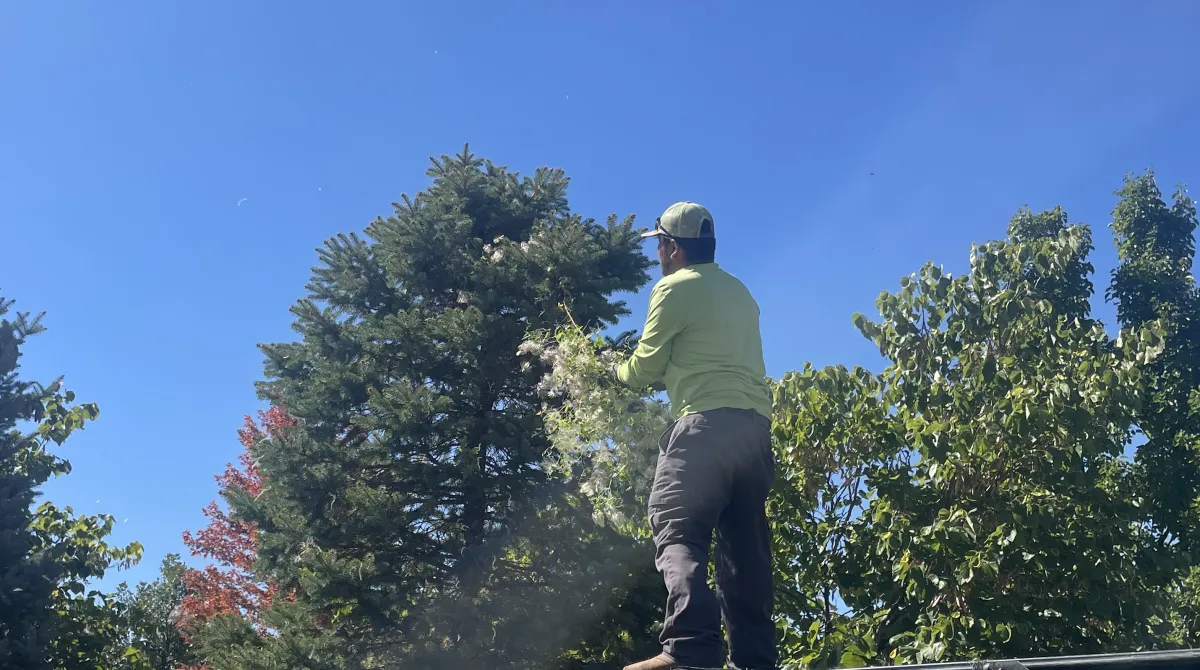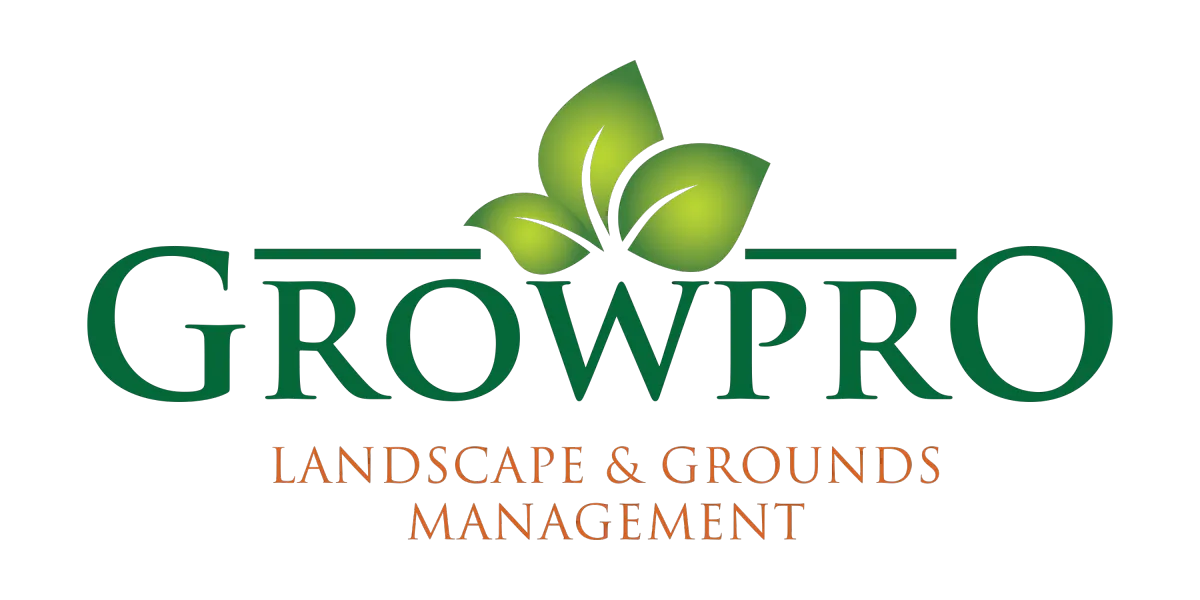Tree Pruning
Contact Information and Service Requests
For more information or to request a service quote, please contact:
Utah: Cameron Fox or Hud Fuller, VPs of Business Development
North Carolina: Tanner Towle, President, Owner GrowPro North Carolina
To submit a service request or receive a personalized bid, please use the “Request Bid” button above. Specify your preferred contact person if desired.
Service Overview
GrowPro’s tree pruning services are essential for maintaining the health, safety, and aesthetics of the trees on your property. Our skilled arborists use precise techniques to enhance tree structure, promote healthy growth, and prevent potential hazards.

Benefits of Tree Pruning
Our tree Pruning services provide sculpted benefits, including:
Healthier Trees: Proper pruning techniques remove dead or diseased branches, promoting healthier tree growth and reducing the risk of disease spread.
Enhanced Safety: By removing potentially dangerous branches that could fall and cause injury or property damage, tree pruning increases overall safety on your property.
Improved Aesthetics: Regular pruning helps maintain a neat and tidy appearance, enhancing the overall look of your landscape.
Increased Sunlight and Air Circulation: Pruning can improve sunlight penetration and air circulation around the tree and the surrounding landscape, benefiting the overall ecosystem.
How the Service is Delivered
Assessment: Our experts begin with a thorough assessment of your trees to determine the specific pruning needs.
Customized Pruning Plans: We develop a pruning plan tailored to the age, species, and health of each tree, as well as your landscape goals.
Professional Execution: Our trained arborists use safe and effective pruning techniques, ensuring that each cut is made with precision.
Clean-Up and Disposal: We ensure that all debris is removed from the site, leaving your property clean and tidy.

Customization Options
Seasonal Pruning: Depending on the tree species, pruning can be scheduled at specific times of the year to optimize health and growth.
Young Tree Training: Specialized pruning techniques for young trees to encourage strong structure and desirable form as they grow.
Restorative Pruning: We can address trees that have been previously neglected or improperly pruned to restore their health and appearance.
Pricing Information
Pricing for tree pruning services is determined by several factors:
Number of Trees: The total number of trees and their accessibility can affect the cost.
Tree Size and Condition: Larger or more complex trees may require more time and specialized equipment to prune.
Frequency of Service: Regular maintenance schedules can be established to ensure ongoing health and aesthetics.

Safety and Compliance
All pruning operations are conducted in compliance with industry safety standards and best practices to ensure the safety of both the property and our crew.
Sustainability Practices
Eco-Friendly Waste Disposal: All waste from pruning operations is responsibly disposed of or recycled as mulch when appropriate.
Conservation of Tree Health: Our pruning methods are designed to protect and enhance the natural environment, promoting biodiversity.
Why is it important to prune trees regularly?
Regular tree pruning is essential for maintaining the health, safety, and aesthetic appeal of trees. Here are the key reasons why regular pruning is crucial:
1. Health:
Removal of Dead or Diseased Branches: Pruning helps remove dead, diseased, or damaged branches, which can be entry points or breeding grounds for pests and pathogens. By removing these branches, you help prevent the spread of disease and reduce the risk of pest infestations.
Improves Air Circulation and Sunlight Exposure: By thinning out a dense canopy, more light can reach the interior of the tree and the underlying ground. Improved air circulation and sunlight penetration promote healthier growth and reduce the likelihood of diseases.
2. Safety:
Prevents Branch Failures: Overgrown or dead branches can break off during high winds, storms, or under the weight of ice and snow, posing a serious risk to people, vehicles, and structures below. Regular pruning ensures that vulnerable branches are dealt with before they become a hazard.
Maintains Structural Integrity: Pruning can help shape the growth of the tree to ensure a stable structure and balance, reducing the likelihood of unexpected falls or splits, especially in adverse weather conditions.
3. Aesthetic Appeal:
Enhances Appearance: Pruned trees are typically more attractive. Regular pruning helps maintain a clean, neat appearance and can enhance the overall form of the tree, making landscapes more appealing.
Controls Size and Shape: Regular pruning allows you to manage the size and shape of the tree, making it fit better within its landscape environment, and maintaining the desired design and appearance of your outdoor space.
4. Promotes Growth:
Encourages New Development: By removing old or excess branches, pruning stimulates the tree to produce new growth, which can result in more vigorous trees and increased flowering or fruit production.
Directs Growth: Pruning can direct the growth of the tree by encouraging branches to grow in a certain direction, which is particularly important for trees growing near homes or power lines.
5. Increases Fruit Production:
Improves Yield: For fruit trees, regular pruning is important to remove old growth that no longer produces and to stimulate new growth that is more likely to bear fruit.
Better Fruit Quality: Pruning improves air circulation and sunlight exposure to the fruits, which can enhance their size and sweetness.
6. Longevity:
Extends Tree Life: Regular maintenance, including pruning, can extend the life of a tree by removing elements that stress the tree, such as diseased wood and overcrowded branches.
Regular tree pruning is not only a critical maintenance task but also an investment in the health and longevity of your trees. It's advisable to have trees inspected and pruned by professional arborists who can identify the needs of each tree and perform the work safely and effectively.
Can pruning help my trees grow better?
Yes, pruning is an essential practice that can significantly improve the health and growth of trees. Here are some key ways in which proper pruning contributes to better tree growth:
1. Directs Energy to Desirable Growth:
Focuses Resources: By removing dead, diseased, or weak branches, pruning allows a tree to redirect its energy and resources toward producing new, healthy growth. This can lead to more vigorous and robust development.
Balances Growth: Pruning helps balance the crown of a tree, which can prevent resource wastage on competing branches and promote a more structured growth pattern.
2. Enhances Sunlight Penetration and Air Circulation:
Increases Exposure: Proper pruning techniques open up the foliage of a tree, allowing more light to penetrate to the interior of the crown and to the ground beneath. This increased light can improve photosynthesis in lower branches and help prevent diseases caused by excess moisture.
Improves Airflow: Increased air circulation within the canopy reduces humidity around the tree’s foliage, which lessens the likelihood of fungal diseases and promotes healthier growth.
3. Stimulates Fruit and Flower Production:
Boosts Flowering and Fruiting: In fruit trees, strategic pruning is used to remove old wood that no longer produces fruit and to stimulate the formation of new fruiting wood. This can increase both the quantity and quality of the fruit produced.
Optimizes Energy Use: By reducing the number of fruiting branches through pruning, the tree can allocate more resources to fewer fruits, enhancing their size and taste.
4. Maintains Tree Health and Vitality:
Prevents Diseases and Pests: Regular pruning helps prevent the spread of pests and diseases by removing parts of the tree that may be infected or particularly vulnerable to infection. A healthier tree can grow more vigorously and is more resistant to pests and diseases.
Encourages Healing: Proper cuts made during pruning encourage quicker wound closure, reducing the risk of infections and decay that can compromise a tree’s health and growth.
5. Improves Structural Integrity:
Reduces Weight and Stress: Pruning can remove excessive weight from a tree’s branches, reducing the stress on its trunk and roots, and preventing structural failures.
Trains Young Trees: For young trees, formative pruning is crucial to develop a strong and desirable branch architecture. This early investment in pruning sets the foundation for future growth and stability.
6. Enhances Aesthetic Appeal:
Shapes and Sizes: Pruning allows for the control of the size and shape of a tree, which not only ensures it fits well within its landscape but also maintains its beauty and proportionality as it grows.
Pruning, when done correctly and at the right times, is much more than just cutting away parts of a tree; it's a vital care practice that enhances a tree’s structural beauty, improves its health, and increases its vitality, ultimately contributing to better and healthier growth.
What is the best time of year to prune different types of trees?
The optimal time for pruning trees varies based on the type of tree and the specific goals of pruning, such as shaping the tree, removing dead or diseased limbs, or enhancing fruit production. Here are general guidelines for the best times to prune different types of trees:
1. Deciduous Trees:
Late Winter to Early Spring: Pruning deciduous trees during dormancy (just before spring growth starts) is often ideal because it allows for easy viewing of the tree structure and promotes fast healing in the spring. This timing also minimizes the risk of disease infection and pest infestation that are more prevalent in warmer months.
Exceptions: Some deciduous trees that bloom in spring, such as magnolias and lilacs, should be pruned immediately after their flowers fade in late spring or early summer to preserve the next year’s blooms.
2. Evergreen Trees:
Late Winter to Early Spring: Similar to deciduous trees, evergreens can be pruned in late winter while they are dormant. This timing helps ensure vigorous spring growth.
Pine Trees: For pines, it’s often best to prune when they start growing new "candles" or shoots in spring. Pruning at this stage allows for better control over the shape of the tree.
3. Fruit Trees:
Late Winter to Early Spring: Pruning fruit trees during dormancy helps expose the structure of the tree, making it easier to prune for optimal fruit production. It also stimulates strong growth of the branches that bear fruit.
Exceptions: Citrus and other frost-sensitive trees should be pruned after the risk of frost has passed to avoid exposing new cuts to harsh conditions.
4. Flowering Trees:
Spring-Flowering Trees: Trees that bloom in spring should be pruned immediately after they finish flowering. Early pruning allows the tree to set buds for the next season during the summer.
Summer-Flowering Trees: Trees that flower in summer can be pruned in late winter or early spring, as their flowers develop on new growth.
5. Vulnerable Trees:
Avoid Fall Pruning: It’s generally best to avoid pruning most trees in the fall. Pruning wounds heal slower during this time, and cuts can expose trees to various fungal diseases and decay agents that are more active in wet conditions.
6. Safety and Health Pruning:
Year-Round: While there are optimal times to prune trees for growth and bloom, you can remove dead, damaged, or diseased branches at any time of the year as soon as they are noticed. This type of pruning is crucial for the health and safety of the tree and its surroundings.
Proper timing of tree pruning is crucial for achieving the desired results while maintaining the health and vigor of the tree. It’s also important to use the correct pruning techniques and tools to ensure clean cuts and minimize damage. If in doubt, it’s wise to consult with or hire a professional arborist to manage your tree pruning needs effectively.



